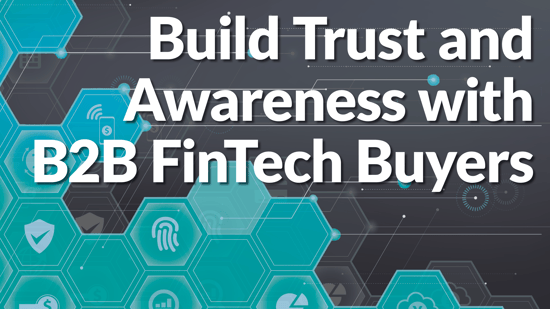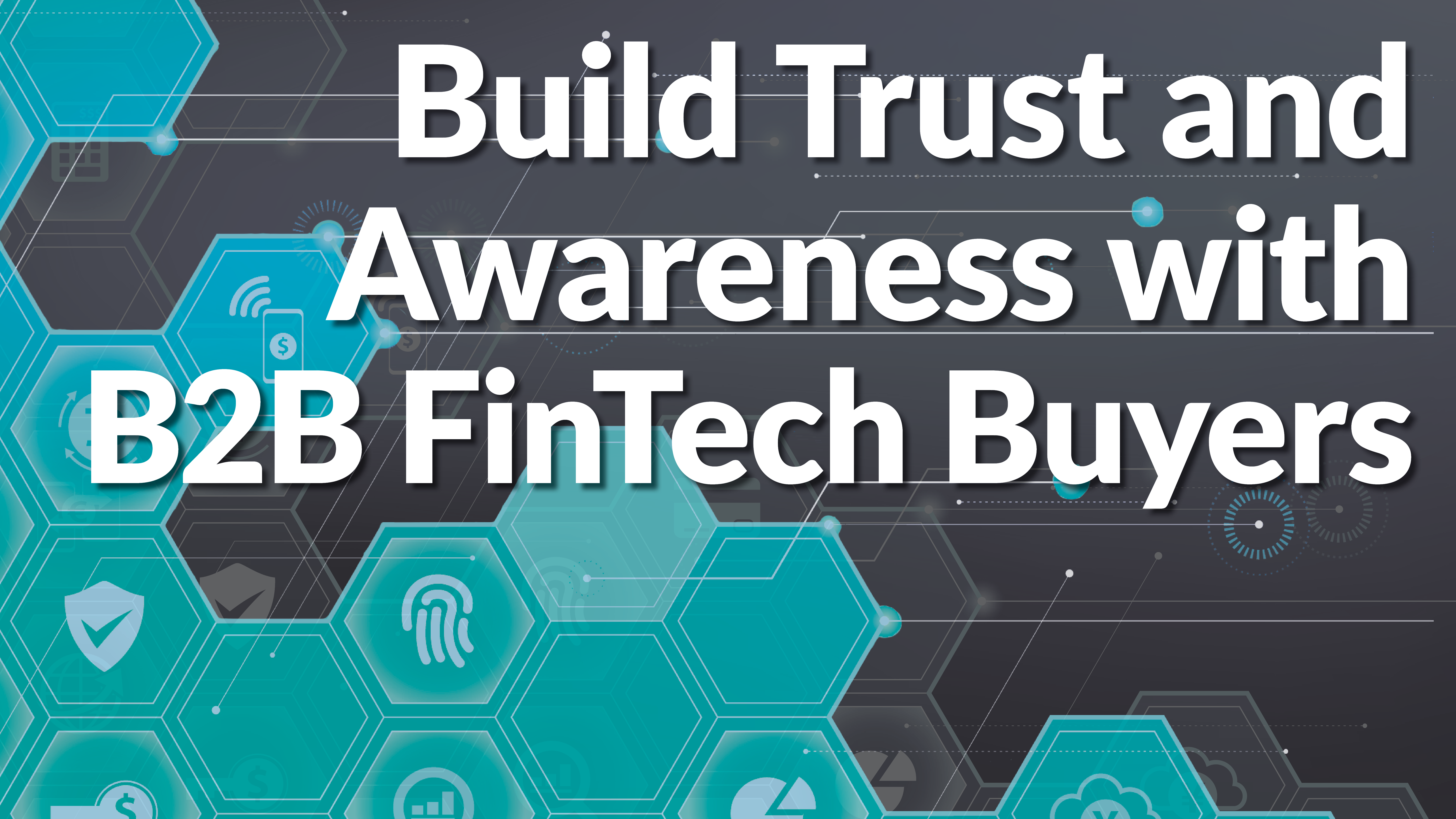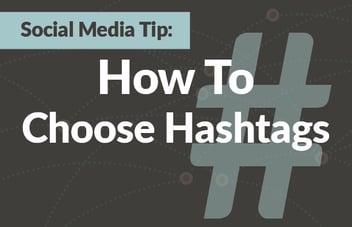Why Content Marketing Is Perfect For FinTech Brands

Technology is embedded in everything we do each day, most often in ways that no one ever even really stops to think about or question. But even though it is a ubiquitous part of daily life, there is one field where it is still essential to educate and build a foundation of trust in our use of technology: financial services.
Though technology has been key to financial services for decades, its use is more visible than ever to consumers, and the growing interconnectivity of all things on the internet makes it even more essential that B2B fin tech providers build a foundation in their marketing that earns that trust.
Content marketing is the perfect vehicle for doing so: creating high-quality, informative content that lets prospects and leads know that your company can be trusted with their data and their customers’ money.
What FinTech marketers need to achieve:
1. Build trust
When marketing a service that is involved in handling money—whether to individuals or as a B2B solution that addresses everything from cash flow to collections—it is essential that potential customers trust the brand to deliver on expectations and to treat every detail carefully. Trust isn’t built by flashy promotion; it is built by providing detailed, accurate information that directly addresses the concerns consumers and B2B decision-makers have regarding security, compliance, reliability and more.
While face-to-face discussions with the sales team will be a part of that trust, your content is what gets leads to that point.
2. Educate prospects
Financial services is already a complex industry with multiple areas of focus from banking services to investing. Add in the constantly changing technology and interconnectivity that has developed in the last two decades, and it can be a confusing field.
Well-written and carefully designed content is able to cut through the confusion and provide easy-to-understand explanations for how FinTech solutions solve problems for customers, whether that involves providing small lenders with alternative payment collection processes for loans or inspires greater consumer use of touchless technology or customer loyalty perks at the point of sale.
Being able to explain both the financial benefits and how the technology works in jargon-free content requires in-depth knowledge, but the resulting marketing materials are worth the extra effort when they allow leads to truly understand how the solutions discussed can address their biggest challenges.
3. Grow brand awareness
Financial services are no longer strictly the domain of global powerhouse brands. Digital services have enabled many small enterprises to enter the financial services marketplace, especially those serving niche markets, and they are no longer limited by geographic location in the ways they can serve customers.
While the capability is there for many small companies to offer the same services as industry leaders, the challenge is in reaching potential customers and gaining a foothold in the market when no one knows their name. Content marketing, especially strong thought leadership and earned media, can launch new brands in the market without having to match the established powerhouses dollar for dollar in advertising.
How to achieve key FinTech marketing objectives through content:
Make the most of data
Original research and data are proven ways of showing prospects the strength of your brand and educating B2B decision makers about how FinTech solutions influence consumer behavior.
We have helped multiple FinTech clients use either consumer surveys or data from their own systems to develop multiple content marketing campaigns, based on information no other company in the field could provide at the time.
For eight years, JONES worked with ACI Worldwide, including developing a series of consumer and business surveys that led in a single year to more than 200 articles and media mentions, eventually playing a role in helping the company land a $100 million equity partnership with IBM.
By thinking beyond ACI Worldwide’s immediate customers to the consumers those customers served, and developing data showing how consumer opinion and behavior influenced their interaction with topics from credit card fraud to loyalty card programs, JONES and ACI were able to develop thought leadership content also that highlighted the company’s expertise in industry media. (Read more: Client Success: Consumer Surveys Yield B2B Selling Points)
Another JONES client, which offers innovative digital payment options to businesses serving unbanked or underbanked customers, was able to use its own data regarding how lending, payments and spending—including the impact of federal stimulus payments—changed in the first six months of the Covid-19 pandemic to drive a media campaign that resulted in articles and podcast interviews appearing in media outlets ranging from Retail Wire to Automotive News and the Leaders In Payments Podcast.
These companies used data that no one else had to provide useful information to the industry.
Speak to the pain points of specific personas and target markets
The financial services industry is huge and wide-reaching. While there are a few behemoth names in the industry with fingers into every possible pot—offering every kind of service needed by the banking industry, securities and trades, retail and more—there are also opportunities for niche companies to provide excellent service to specific target markets. But they have to reach those audiences with very specific information.
JONES recently helped a securities and clearing division of a larger banking entity launch into the market under a new name. But rather than directly taking on dominant market players such as Schwab and Fidelity, JONES helped the company identify an underserved market: small and medium-sized registered investment advisors, whose portfolios are less than $100 million. This segment of the investment market had more than doubled in numbers between 2008 and 2018, but was often left struggling to be signed by major companies, despite their services to high-wealth individuals.
JONES helped the clearing company develop a series of content campaigns, each including a downloadable asset, blog posts and emails promoting the content, with the focus on the specific pain points of those small RIAs, including choosing and changing custodians.
Another JONES client specializes in providing digital payment options that allow specialty lenders to work with customers who may be “unbanked” or underbanked, accepting payments using cash at convenient existing retail locations such as drug stores. The client’s customers include auto loan companies and others that might otherwise struggle to collect from customers.
By pinpointing the challenges those customers face—accepting cash payments, reducing returned ACH payments, reducing employee time spent seeking alternative payments—JONES’s client targeted the specific market for which their service provided an excellent solution.
By intimately understanding the needs of a specific niche market, and targeting content to those pain points, start-up and specialty FinTech firms can make inroads into the overwhelming deluge of generic content being generated and find their place among the financial heavy-hitters.
Understand compliance regulations before creating content
This third step is less about reaching the customer than it is about saving resources for your marketing department. While the best content will speak in jargon-free terms and be understandable to the audience, regardless of the individual’s familiarity with both the financial and the technology aspects of your solution, it still has to meet certain standards.
Don’t waste precious time in rewrites, edits and changes after the bulk of the content creation has been done. Instead, ensure that your marketing team (or the agency creating content for you) understands up front the specific compliance regulations your company has to work under in creating marketing content. Meet with the legal team as part of your campaign planning to avoid costly delays in recreating content that doesn’t meet expectations and regulations.
This is one time where a partner agency’s familiarity with your industry truly matters.
What channels should FinTech marketers use?
There are three primary types of content and distribution channels that FinTech marketers can use to reach audiences with high-quality content that will educate customers and build trust in their brand: owned media, earned media, and lead-generating offers.
Owned media content
Owned media includes content that the brand completely controls. In this realm, blog posts are especially important in sharing information and providing SEO power for the brand’s website. Social media is also used to reach audiences with content that links back to the website where more detail and insights can be offered.
Earned media content
Earned media can be especially important, as many B2B buyers and decision-makers place a higher value on third-party information than that coming directly from potential vendors. Placing bylined articles in industry media, using news releases to garner media mentions and independent articles, and outreach to industry influencers such as podcasters is a powerful way to build authority and trust in the industry. Two key elements of successfully leveraging earned media opportunities include executive coaching to help company leaders prepare for interviews with the most pertinent information and messaging, and promotion of that earned media through owned channels to highlight the authority it provides.
Downloadable offers
A third content component that should be included in FinTech content marketing campaigns is the downloadable offer. While technically it qualifies as owned media, these offers are distinguished from blog posts and social media by their direct impact on lead generation. High-value gated content such as complete whitepapers and reports, case studies, webinars and more capture leads in the download process, providing your brand with the ability to nurture those leads with additional content, and also provide valuable information about leads to pass along to sales once a lead meets qualification criteria.
Content marketing is a natural fit for the FinTech industry, leveraging useful information to target the pain points of specific audiences and develop thought leadership authority and trust in your brand. Each campaign should include a full range of content centered around one of the identified pain points, providing a central message through multiple channels. Find more about our approach to complete campaign planning: The JONES Campaign Planning Solution.
You’ll also find more on our FinTech experience and approach in this blog post:
FinTech Marketing Starts With Authority and Trust.
Would you like to know more about our FinTech experience and how we may be able to help your business use content marketing to gain the brand awareness and trust needed to succeed? Click here to request examples of our work or schedule a no-obligation consultation with me to chat about your goals and challenges.
-1.png?width=1652&height=294&name=Jones(RGB)-1.png)









.jpg?width=352&name=Client%20Success_%20Complete%20Content%20Packages%20Fuel%20West%20Marketing%20Strategy%20(1).jpg)


